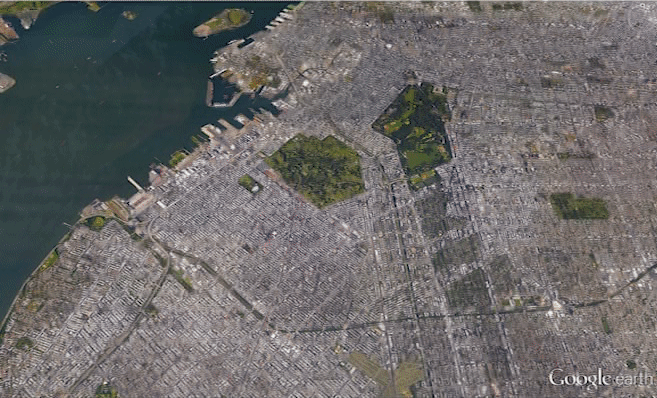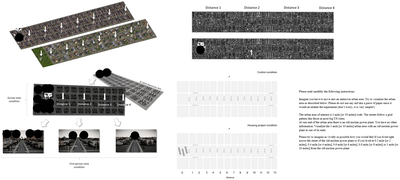Influence Propagation in Space
Each urban area has some places that stick out affectively from the rest. These so-called "hotspots", like a nice park or an unsafe housing block, possess influence that propagates into the surroundings. First, I am interested in how this influence colors the affective perception of the surroundings. Second, I investigate how people implicitely take into account these influence processes for constructing affective overviews of geographical areas. My colleagues and I blend theories from social cognition and psychophysics to do so.

As a first step, it is necessary to understand how the influence from hotspots propagates as a function of various factors.

_______________
For this, me and my colleagues employ an experimental methodology. In general, participants see neighborhoods that contain either one or several hotspots and are asked how it would feel, or how much rent they would be willing to pay, to live increasingly far away from one or several hotspot(s). We apply various manipulations, use different designs (within-subjects versus between-subjects) as well as different presentation modes (2d survey view, 3d immersion, or verbal description of neighborhoods).

_______________
A first series of experiments shows that influence propagation depends on the type of hotspot (some hotspots have larger areas of influence than others), and on the size of the urban area people are considering (influence propagates farther in a larger urban aera). Influence elicits evaluative assimilation of the surroundings where it is strong but evaluative contrast where it is milder or inexistant.






_______________
The contrast effect emerges also when participants are immersed in a 3d environment with a fear-conditioned negative hotspot. However, it emerges only in participants´ self-reports, not in their physiology.
Kastendieck, T., & Blaison, C. (2017). In preparation.

_______________
A further set of experiments shows that influence has different effects whether it propagates in intrinsically positive or negative surroundings.
Blaison, C., Gollwitzer, M., & Hess, U. (2017). Effects of “hotspots” as a function of intrinsic neighborhood attractiveness. Journal of Environmental Psychology, 51, 57-69.

_______________
A different set of studies shows that when the areas of influence of two hotspots opposite in valence overlap, positive influence may mitigate negative influence without canceling it out entirely.
Blaison, C., Gebauer, J. E., Gollwitzer, M., Schott, F., Kastendieck, T. M., & Hess, U. (in press). On the Combined Influence of Attractive and Unattractive Locations. Environment and Behavior.


_______________
Recently, we conducted a series of experiments that investigated how negative influence that propagates by air (e.g., toxic particles) or at ground level (criminal activity) was affected by borders that represented no real obstacle to either influence (e.g., a rail road crossed by bridges; a narrow avenue). We found that these passable borders buffered ground-level influence in any case whereas they buffered aerial influence only in certain conditions (border is large enough; influence of the border itself is controlled for).
Blaison, C., Ramadier, T., Kastendieck, T. (2017). In preparation.
_______________
Based on these results, we are currently exploring how people implicitely take into account these influence processes to evaluate a geographical area as a whole (e.g., a neighborhood with one or several hotspots).
